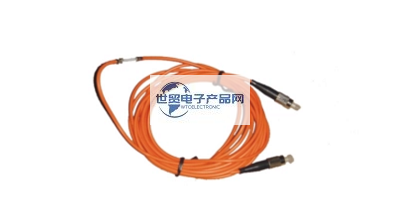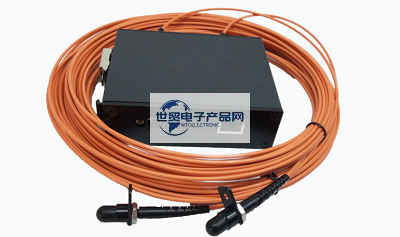Categorization:Product Information
Optical fiber temperature sensor is a sensing device that uses the principle that the spectrum absorbed by some substances changes with temperature to analyze the spectrum transmitted by optical fiber and understand the real-time temperature. The main materials are optical fiber, spectrum analyzer, transparent crystal, etc. Divided into distributed optical fiber fluorescence temperature sensors. The optical fiber temperature sensor uses a polymer temperature-sensitive material matching the refractive index of the optical fiber to coat the outside of two fused optical fibers, so that light energy is input from one optical fiber to the reflective surface and output from the other optical fiber. Because this new temperature sensitive material is affected by temperature, the refractive index changes, and the output optical power is a function of temperature. Fiber Optic Temperature Sensor Classification. Distributed fiber optic temperature sensors. Distributed fiber optic temperature sensors are commonly used in systems that detect spatial temperature distributions. Its principle was first put forward in 1981, and with the experimental research of scientists, the technology was finally developed. The principle of this sensor is based on three kinds of sensors: Rayleigh scattering, Brillouin scattering and Raman scattering. Great progress has been made in the research of Rayleigh scattering (OTDR) and Brillouin scattering (OTDR). Therefore, the research hotspots of future sensors will focus on the research of new distributed fiber optic sensors based on horn scattering (OTDR).

---------------------------------------------------------------------------------------------------
Recently, a distributed fiber optic temperature sensor has been developed in Gunesyilmaz, Turkey, with a temperature resolution of 1 °C and a spatial resolution of 1 °C. 23m. Many universities in China have also studied distributed optical fiber temperature sensors. For example, in 1997, China Jiliang University invented a coal mine temperature detection sensor system, which detects temperatures ranging from-49 °C to 150 °C and has a temperature resolution of 0. (2) Optical fiber fluorescence temperature sensor. At present, the most popular research is optical fiber fluorescence temperature sensor, which uses the luminescence characteristics of fluorescent materials to detect the temperature of the luminescent region. When this fluorescent material is stimulated by ultraviolet or infrared rays, it usually emits light, and the emitted light parameters and temperature are necessarily related, so the temperature can be tested by detecting the fluorescence intensity. Universities around the world have designed such sensors. For example, Seoul University in South Korea found that the temperature index of 10cm double-doped fiber corresponding to the fluorescence intensity reflected at 915nm is 20 °C ~ 290 °C; Tsinghua University in China uses semiconductor Gaas raw materials to absorb light, and then develops an optical fiber fluorescence temperature sensor from 0 °C to 160 °C based on the principle that light changes with temperature. Optical fiber temperature sensors are mainly used in power system, construction, chemical industry, aerospace, medical treatment, ocean development and other fields, and have achieved a lot of reliable application results. In addition to its applications in geophysics and bridge engineering, it is also used in other fields. 1. Optical fiber temperature sensors have important applications in power systems, power cable surface temperature and cable dense area temperature monitoring, high-voltage power distribution devices, power plants, substation ambient temperature detection and fire alarm systems, various large and medium-sized generators, transformers, motors temperature distribution measurement, thermal protection and fault diagnosis, heating systems, steam pipes, oil pipeline temperature and fault point detection, geothermal power stations, indoor closed substation equipment temperature monitoring, etc. 2. Optical fiber temperature sensors, especially fiber grating temperature sensors, are easily buried in materials to measure their internal temperature, so they are widely used in buildings and bridges. Some developed countries such as the United States, Britain, Japan, Canada and Germany have carried out bridge safety monitoring research, and installed bridge safety monitoring and early warning systems on the main bridges to monitor key safety indicators such as strain, temperature acceleration and displacement of bridges. In the summer of 1999, 120 fiber grating temperature sensors were installed on a steel bridge on Interstate 10 in Las Cruces, New Mexico, setting a record for the most use of such sensors on a single bridge. 3. The aerospace industry is a sensor-dense place. In order to monitor pressure, temperature, vibration, fuel level, landing gear status, wing and rudder position, the aircraft needs to use more than 100 sensors, so the size and weight of the sensors become very important. Fiber optic sensors Few other sensors can compare to the small size and light weight. 4. The small size of the sensor makes great sense in medical applications. Fiber Bragg grating sensor is the smallest sensor at present. Fiber grating sensors can measure human tissue function with minimal intrusion and provide accurate local information of temperature, pressure and acoustic wave field. Fiber Bragg grating sensors have rich technologies for human tissues. Research on fiber optic temperature sensors accounts for nearly 20% of all fiber optic sensor research. In addition to on-site verification, improvement and improvement of existing equipment, the research of optical fiber temperature sensor has the following development trends: vigorously develop measurement technology for measuring temperature distribution, that is, from measuring single point temperature to measuring temperature distribution along optical fiber and large area surface temperature distribution; Development of multifunctional sensors, including measuring temperature; Develop large sensor arrays to enable all-optical telemetry.

---------------------------------------------------------------------------------------------------
2. About the relevant introduction of the World Trade Electronic Products Network platform and the brief description of sales products: World Trade Electronic Products Network--professional agent/production/sales of various {connector wiring harness and cable products}; If you have related [connector wiring harness and cable products] purchasing/purchasing needs or want to purchase/understand which connector wiring harness and cable product solutions we can provide, please contact our business staff below; If you have related [Connector Wiring Harness Cable Products] sales/resources and promotion needs, please click "→ Business Cooperation ←" to negotiate with a dedicated person!